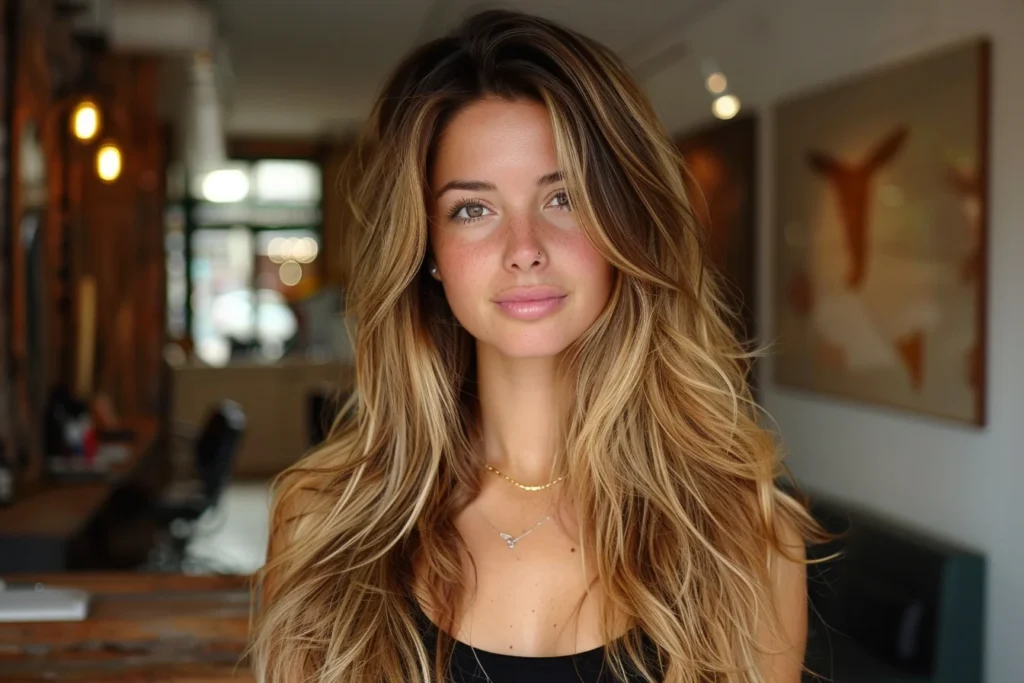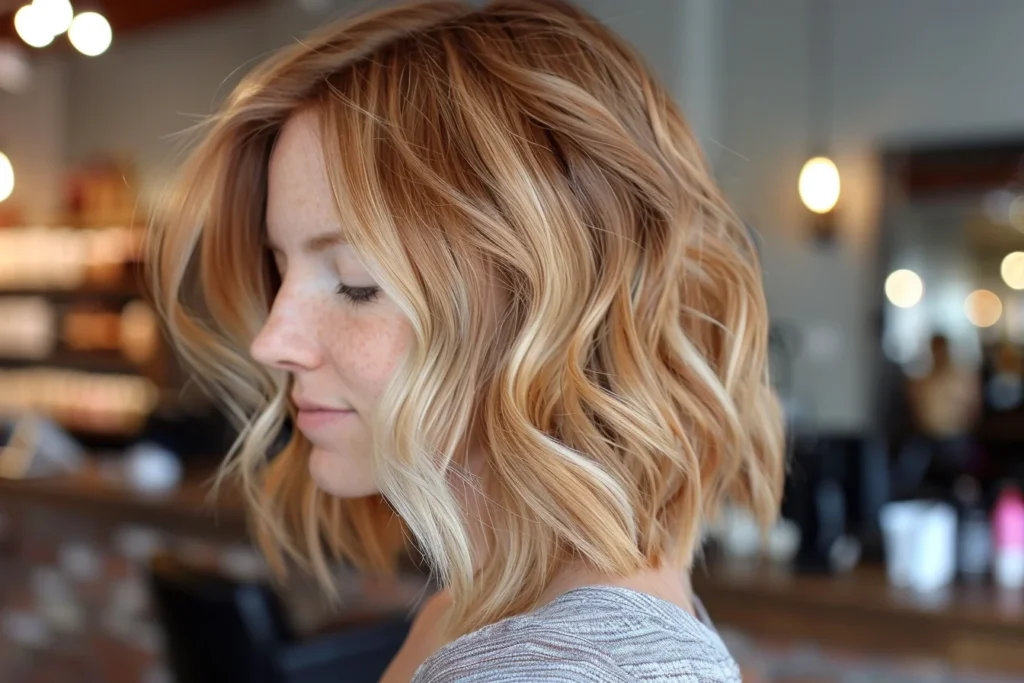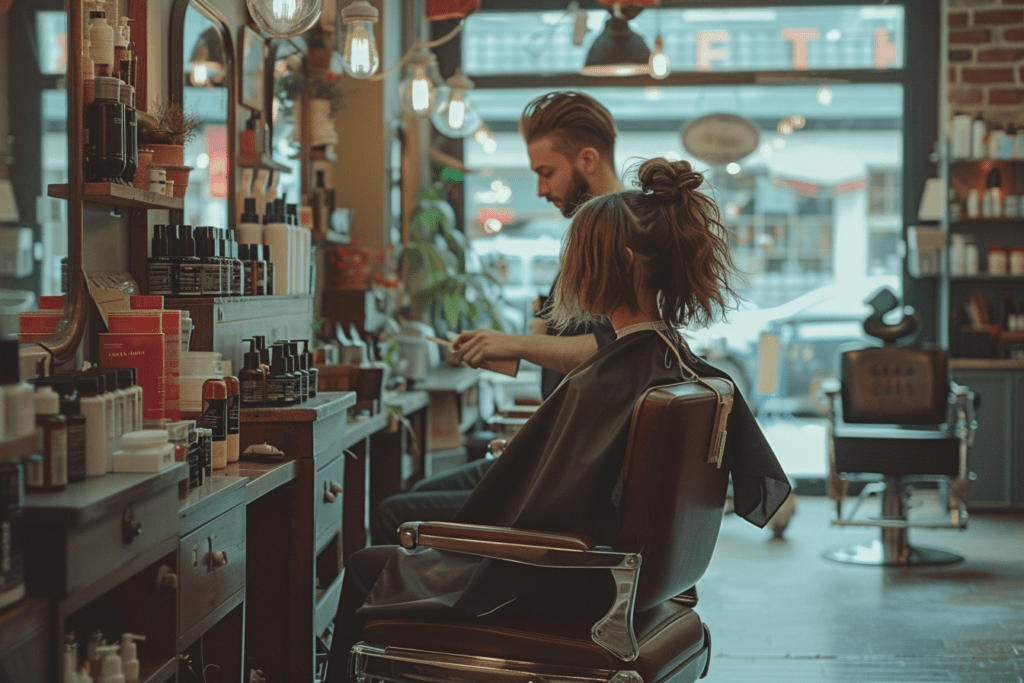Choosing between highlights and balayage can be difficult when looking to change hair color. My personal experience with both methods might help you decide what is best for you.
What am I thinking? Here’s a rough idea of what I’m thinking.
Definition of Balayage and Highlights
Balayage, which means “to sweep” in French, is a technique where the dye is painted on by hand creating a natural sun-kissed look.
It starts lighter at the roots and gets heavier towards the ends so it blends in seamlessly with your natural hair color. It’s less structured than other methods but gives off warm softness.
On the other hand, highlights are created by dividing hair into small sections and wrapping them in foil after applying bleach or dye.
This creates a higher contrast between colors than balayage does because it’s more precise and structured against your base shade. Typically people need touch-ups every six to eight weeks since their distinct differences require maintenance.
RELATED: How Can I Restore Moisture And Combat Dryness in My Hair?
Different Types of Balayage

1. Full balayage – This classic technique involves painting from about mid-lengths to ends.
2. Face framing balayage – Only lightening strands around your face starting a few inches away from roots; it’s very low maintenance because there isn’t as much growth out before seeing a noticeable difference.
3. Subtle Balayage – Uses shades only slightly lighter than your natural color for a soft understated appearance throughout the lengths.
4. Foliage: A combination of balayage and traditional foils that helps prevent color transfer between strands while providing a blended effect
Personal Experience with Balayage
I was introduced to my first-ever attempt at doing anything like this about two years ago now. Then again when I wanted something different done recently (which one?).
At that point, I just wanted some kind of real-looking hair-dying thing that wouldn’t be too hard to keep with so looked into options surrounding me, which is when balayage came across my radar.
Unlike traditional highlights which have those obvious lines as your hair grows out, with this method there aren’t so many roots showing through the first few inches of growth.
It was recommended to me as being good for someone busy like I am who wouldn’t have a lot of time or money to spend going back every six weeks.
Anyway, after wandering into a salon one day and asking for it an actual professional sat me down in a chair and then skillfully went to work painting on different shades.
RELATED: How Ozone Therapy Transforms Your Hair
Started by using freehand strokes that started lighter at the roots and got heavier towards the ends until everything was all mixed together and looked like the sun had been hitting parts of my head over the summer.

In short? I loved how natural everything blended together once finished because there really weren’t any harsh lines between the two colors throughout the length.
This alone made such a huge difference between normal foil highlight jobs where you can see exactly where bleach stopped working because they left space between each strip.
Maintenance-wise though it’s not like I never had to touch up anything again after leaving that building but instead now just needed them done much less often – only about every three or four months depending on how fast hair grows out.
When considering what kind would look best remember this.
As you grow older so does your face shape change too sometimes making certain styles better suited for different stages.
What I know about Traditional Foil Highlights (My Experience)
On another occasion when wanted something more dramatic than natural we tried adding some regular old-school ones into the mix instead – these require sectioning strands off more meticulously before wrapping them in aluminum foil packets with bleach worked through them piece by piece…
And boy did those little strips pack punch! They were definitely loud enough to yell “Hey look at me!” from across the room without having to say the word aloud even once because everyone else already knew exactly what happened here just looking at their head full color and screaming brighter than the neon sign outside the barbershop window during power outage night…
Needless to say though while everyone else loved how bold everything came out when applied hairstylist said I would need to come back again sooner.
Deciding Between them
When it comes to hair coloring, the decision between highlights and balayage depends on what you want. Balayage is best for someone who wants a low-maintenance color that looks natural.
It grows out with your hair so you don’t have to go to the salon as often. This makes it perfect for people with busy lifestyles or those who are new to coloring their hair.
On the other hand, if you want something eye-catching and are willing to put in the work to maintain it, traditional foil highlights might be more up your alley.
RELATED: Master the Art of Home Hair Straightening
They give off a brighter, bolder color that can really transform your look. Just keep in mind that this means more frequent salon visits and potentially a larger budget for hair care products.
How to Take Care of Colored Hair

No matter which method you choose, taking care of colored hair is essential. Here are some tips based on my personal experiences:
1. Use the Right Products: Invest in shampoos and conditioners specifically made for color-treated hair that don’t contain sulfates. This will help prevent fading and keep your locks healthy!
2. Shield Your Hair: Always protect your tresses from the sun, and try not to expose them too much to chlorine or salt water because they can strip away colors and cause damage.
3. Don’t Overwash but Do Condition: Try not washing your hair as frequently as usual so that natural oils can nourish it longer while also preserving dye pigments; when you do wash, use lukewarm water instead of hot.
4. Make Deep Conditioning a Habit: Employ deep conditioning treatments weekly or visit a stylist for professional ones every two months – this will restore moisture & elasticity back into strands after dyeing.
In my opinion, each method has its own benefits and downfalls; therefore before making any decisions about which one may suit me better personally or professionally (based off lifestyle).
I would first consult an experienced colorist/stylist who can provide insight on what might work best given my hair type (texture, length) as well as the desired outcome/goals envisioned.

